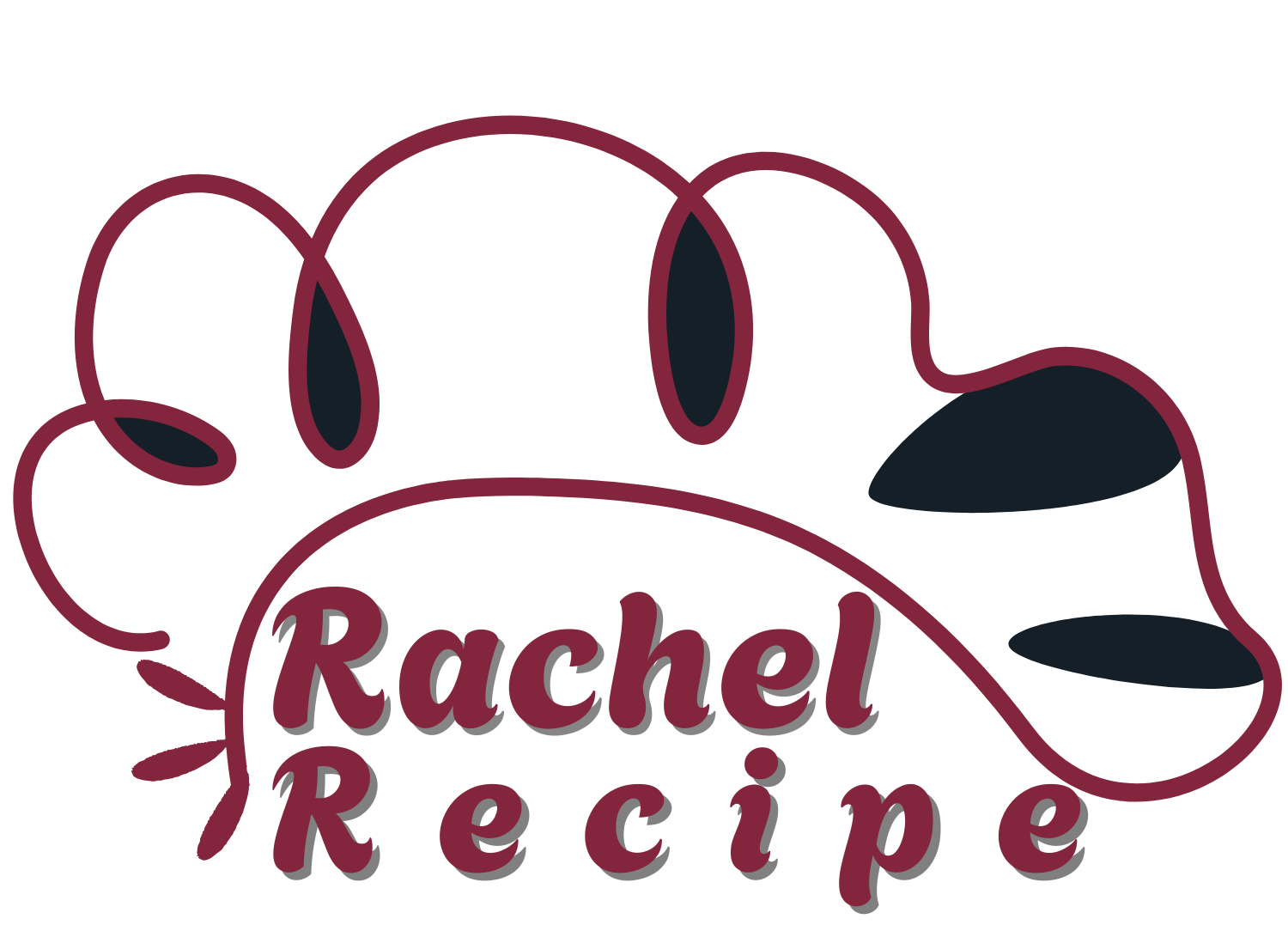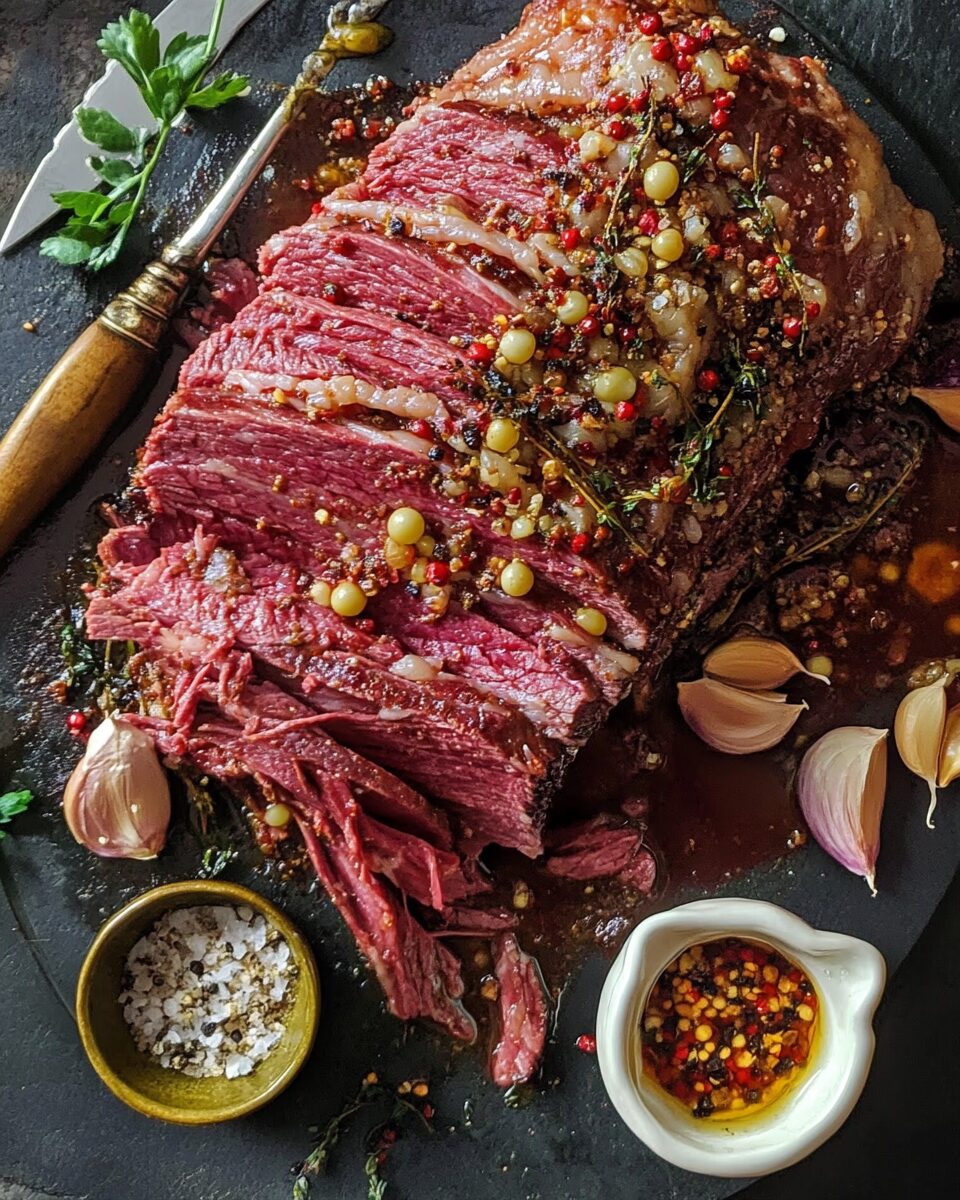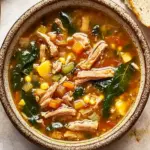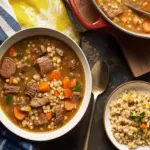The savory aroma of slow-roasted corned beef brisket mingling with garlic, onion, and hearty root vegetables is the kind of culinary magic that makes mouths water before you even open the oven. This timeless dish is deeply comforting, especially when prepared the traditional way — low and slow until each bite falls apart tenderly.
Whether you’re celebrating St. Patrick’s Day or simply craving a nostalgic, hearty meal, this corned beef roast delivers satisfaction. It’s fuss-free yet flavorful, making it a family favorite any time of year. Serve it as-is, or pair it with warm crusty bread and a side of grainy mustard for the ultimate dinner table experience.
Full Recipe:
-
1 (5 1/2 pound) corned beef brisket with spice packet
-
7 small potatoes, peeled and diced
-
4 medium carrots, peeled and diced
-
1 medium onion, diced
-
3 cloves garlic, chopped
-
Water (enough to cover the vegetables)
Directions:
-
Preheat oven to 300°F (150°C).
-
Place the corned beef brisket in the center of a large roasting pan.
-
Arrange the diced potatoes and carrots around the brisket.
-
Scatter the chopped onion and garlic over the top of the meat and vegetables.
-
Sprinkle the spice packet evenly over the brisket.
-
Pour water into the pan until it just covers the vegetables.
-
Cover tightly with a lid or heavy-duty aluminum foil.
-
Roast for 5 to 6 hours, or until the corned beef is fork-tender and can easily flake apart.
Prep Time: 15 minutes | Cooking Time: 5–6 hours | Total Time: 5hrs 15 mins
Kcal: 465 kcal | Servings: 8 servings
The Timeless Appeal of Corned Beef Roast
Corned beef roast is more than just a meal—it’s a dish steeped in history, tradition, and heartwarming flavor. Originally linked to Irish and Jewish culinary traditions, this slow-roasted masterpiece has become a beloved comfort food in many homes, especially around holidays like St. Patrick’s Day. But what makes corned beef roast so universally cherished? The answer lies in its depth of flavor, satisfying texture, and versatility at the dinner table.
The version we’re exploring here is oven-roasted, not boiled or slow-cooked. This cooking method elevates the dish by caramelizing the beef’s exterior while locking in its natural juices. The result is a brisket that’s tender enough to flake apart with a fork but flavorful enough to stand alone or complement hearty vegetables.
A Brief History of Corned Beef
Corned beef has a rich and somewhat surprising history. While most people associate it with Irish cuisine, its origins are more complex. “Corning” refers to the coarse salt grains—called “corns”—used in the meat preservation process during the 17th century. Salt was historically used to preserve meat before refrigeration, and the Irish became adept at exporting salted beef around the world.
Interestingly, corned beef wasn’t widely consumed in Ireland by locals; it was considered a luxury item. Irish immigrants in America, however, found corned beef more accessible and began incorporating it into traditional dishes, often pairing it with cabbage and potatoes. Over time, it became a cultural symbol of Irish-American identity, particularly during St. Patrick’s Day celebrations.
Why the Oven Method Stands Out
There are several ways to prepare corned beef—boiling, slow cooking, pressure cooking—but oven-roasting offers a distinct set of advantages. First and foremost, roasting allows the brisket to develop a delicious crust while maintaining its juicy interior. The enclosed heat environment also enhances the aromatics—onions, garlic, and the signature pickling spice packet—so the flavors infuse deeply into the meat and surrounding vegetables.
Oven-roasting also makes for a more visually appealing presentation. Unlike boiling, which can make the meat look pale and washed out, roasting produces a golden-brown surface that hints at the flavors inside. It’s the perfect method for when you want the dish to not only taste amazing but look it too.
Flavor Profile and Aromatics
The flavor of this corned beef roast is robust and savory, with a touch of spice from the seasoning packet often included with the brisket. The spices typically contain coriander, mustard seed, peppercorn, bay leaves, and crushed red pepper. When roasted, these spices bloom in the oven’s heat, permeating the meat with their warm, earthy notes.
Garlic and onions intensify the umami profile, while carrots and potatoes absorb the savory juices, becoming soft and flavorful during the long roast. It’s a harmony of meat and vegetables in one pan, making cleanup just as satisfying as the meal itself.
Texture That Melts in Your Mouth
Perhaps the most iconic feature of a great corned beef roast is its texture. The brisket cut, known for its connective tissue and fat marbling, becomes luxuriously tender after hours of low, slow roasting. It practically melts on your fork without losing its structure, offering the ideal balance of bite and tenderness.
If you’ve only had boiled or store-bought deli-style corned beef, the oven-roasted version will be a revelation. The edges become slightly crisp, providing a beautiful contrast to the succulent interior. When sliced against the grain, each piece remains moist, flavorful, and easy to chew.
The Magic of One-Pan Meals
Another benefit of this recipe is its simplicity. This dish is the epitome of a one-pan meal: the brisket and vegetables roast together, soaking up the same juices and flavors. This means fewer dishes to wash, more consistent flavor, and a complete meal with protein, starch, and vegetables all in one go.
The potatoes and carrots not only contribute flavor but serve as natural sponges for the beef’s juices. Their soft, buttery texture after hours in the oven is a testament to slow-cooked perfection.
Customization and Substitutions
One of the best things about this corned beef roast is how easy it is to tailor to your preferences. While the base recipe uses potatoes and carrots, you can add other root vegetables such as parsnips, rutabagas, or turnips. Some cooks like to add wedges of cabbage in the last hour of roasting for a more traditional Irish-American presentation.
For a bolder twist, you might consider replacing the water with a dark beer or beef broth. This adds even more complexity and depth, giving the roast a subtly sweet, malty finish. You can also experiment with fresh herbs like thyme or rosemary, or even a splash of apple cider vinegar to cut through the richness.
Serving Suggestions and Pairings
Corned beef roast is a meal in itself, but you can easily take it to the next level with complementary sides. Warm rye or soda bread makes an excellent addition, perfect for soaking up juices. A tangy mustard or horseradish cream sauce offers contrast to the richness of the meat.
If you’re entertaining or serving a crowd, consider adding a fresh green salad or roasted Brussels sprouts to lighten up the meal. A crisp white wine like Sauvignon Blanc or a bold Irish stout makes the ideal beverage pairing.
And don’t forget the leftovers—corned beef makes amazing sandwiches the next day, particularly on toasted sourdough with melted Swiss cheese and a smear of mustard or Russian dressing.
St. Patrick’s Day and Beyond
While many associate corned beef roast with St. Patrick’s Day, it’s a dish that deserves a spot on your table year-round. Its simplicity, affordability, and ability to feed a crowd make it ideal for Sunday dinners, holiday feasts, or even weekly meal prep.
Because it’s such a nostalgic and heritage-rich recipe, serving it brings people together. Whether you’re celebrating your Irish roots or simply indulging in some hearty, homestyle cooking, this dish brings a sense of warmth and community.
Storage and Reheating Tips
Leftovers can be stored in an airtight container in the refrigerator for up to 4 days. When reheating, use a low-temperature oven or a covered skillet on the stove to maintain moisture and texture. You can also freeze portions of the meat and vegetables for up to two months—perfect for pulling out when you need a quick, satisfying meal.
If you plan to use leftovers for sandwiches or hash, slice the corned beef while it’s cold—this helps you get clean, even cuts without it falling apart.
Conclusion: A Classic Worth Keeping
Corned beef roast isn’t just a dish—it’s an experience. From the moment you set it in the oven to the time you serve it at the table, it fills your home with rich, inviting aromas and your plate with deep, comforting flavors. Its roots may be historic, but its appeal is timeless.
Whether you’re feeding a hungry family or preparing a special occasion meal, this oven-braised corned beef roast delivers satisfaction in every bite. It’s humble, hearty, and full of soul—just the way home cooking should be.






